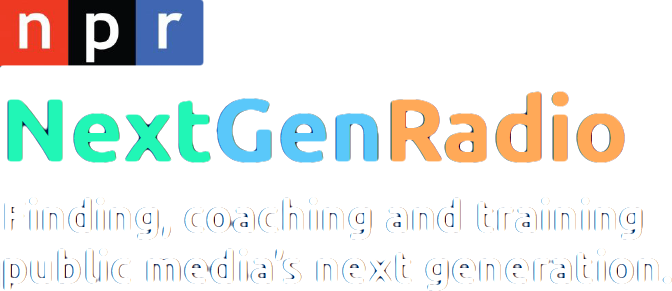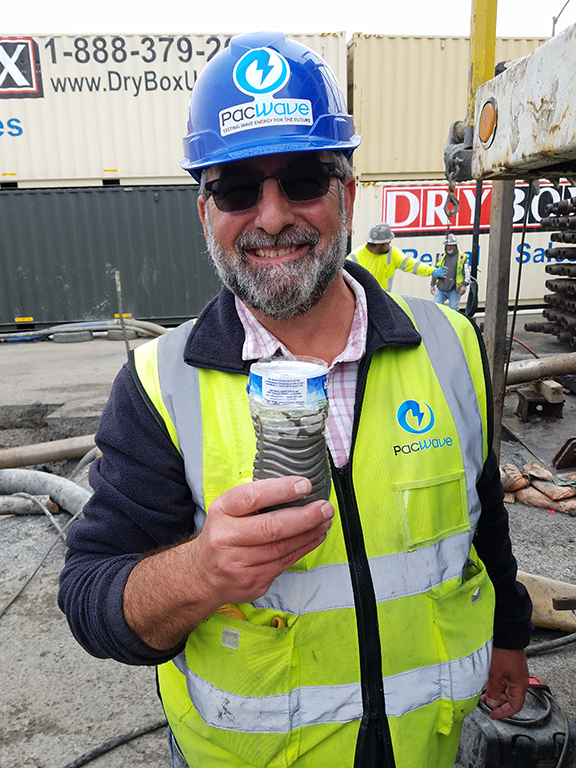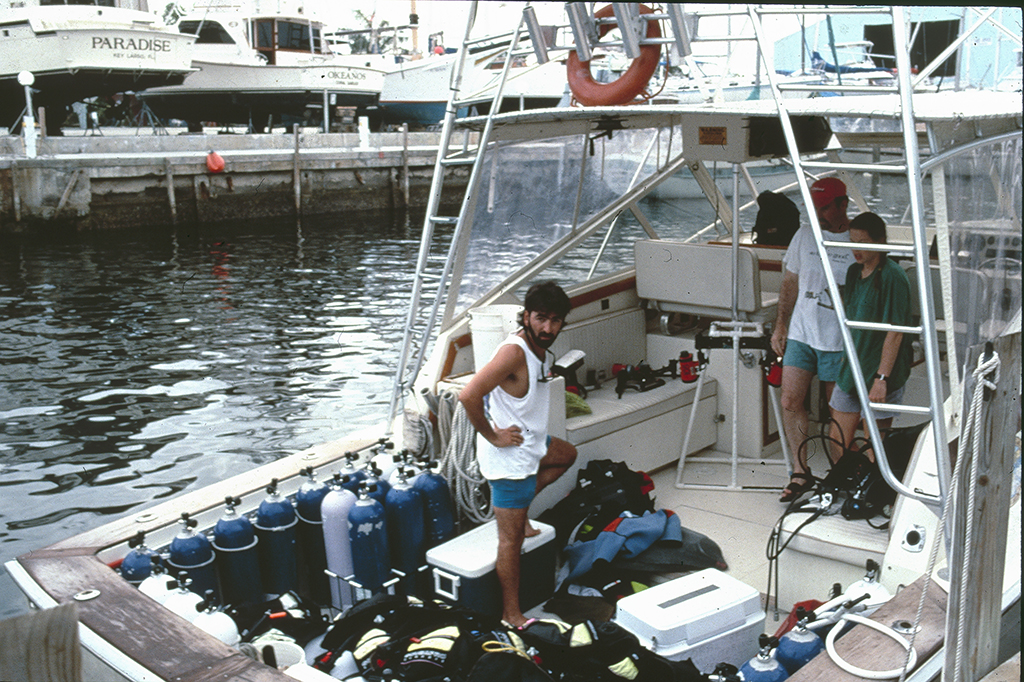
The impact of climate change
We are finding, coaching and training public media’s next generation. This #nprnextgenradio project is created in Oregon, where five talented reporters are participating in a week-long state-of-the-art training program.
In this project we are highlighting the experiences of people whose lives are being affected by climate change.
A passion for the sea turned into a fight against climate change
From the earliest age, Dan Hellin had a plan.
“When you’re a young kid, you always have a dream of being something, y’know, a fireman, a spaceman.” But, Hellin said, “I always wanted to be a scuba diver.”
At 9, he started scuba diving with his father in Sri Lanka and Thailand, where he grew up.
“I’ve always snorkeled and dived, and spent time in the ocean,” Hellin said.
As he grew more attached to the seas, he became aware of climate change.
It led him to his current position as deputy director of PacWave which is a wave energy testing facility affiliated with Oregon State University. The test site will help commercial companies test equipment that would convert wave energy into electricity.
A Passion for the Sea Turned Into A Fight Against Climate Change

Dan Hellin holds a sample of drilling mud at Driftwood Beach State Park in August 2021. Behind Hellin is the drilling operation needed to install the conduits that will link PacWave’s onshore testing equipment to the energy devices in the ocean. (Photo courtesy of Dan Hellin).
Having worked as a marine biologist in Bermuda and Florida, Hellin was a frontline witness to the effects of climate change on the ocean.
“For that working day to day, you know, you see coral bleaching and other effects,” Hellin said. “ Not necessarily catastrophic at that stage, but effects that, you know, climate change was happening; things were changing.”
“Also, living in Bermuda, there was increased hurricane activity. So there’s lots of aspects that you could see that things were changing and sort of maybe a warning about what might happen if things went too far.”
According to the Union of Concerned Scientists, if we do not reduce our carbon emissions, projections show that ocean surface waters could be more than twice as acidic as they were at the end of last century. CO2 and Ocean Acidification | Union of Concerned Scientists (ucsusa.org)
“You can’t wait until things have reached a catastrophic level before you start trying to work out a solution,.” Hellin said.
Along with acidification, fossil fuel-burning energy also is causing other significant effects on the ocean: rising sea temperatures, harmful algae blooms, and many more, all harming coastal livelihoods and industry.
But the ocean itself can provide its effective defense.
It’s an incredible source of renewable energy – ocean energy, derived from natural sources such as water and tides, that doesn’t emit carbon dioxide or other greenhouse gasses that contribute to global warming.
“One of the valuable things about waves compared to some of the other [renewable energy sources], like solar and wind, is that the waves were always there,” Hellin said. “Even on a calm day, you’ve still got those ocean swells coming in, and waves contain a lot of power.”
Increasingly, waves are getting more and more predictable as well.
“A lot of research has been done to predict what the waves are going to be 24 hours out, 48 hours out, 72 hours out,.” Hellin said.
Ocean energy has great potential for human needs. (The ocean – the world’s most significant ally against climate change | United Nations) The U.S. Energy Information AdministrationAdminstration says “the annual energy potential of waves off the coasts of the United States is estimated to be as much as 2.64 trillion kilowatt hours, or the equivalent of about 66% of all the electricity generated across the country in 2020.” (Wave power – U.S. Energy Information Administration (EIA))

Dan Hellin, pictured here in 1996, gets ready to go out on a research dive from Key Largo, Florida. During Hellin’s time researching marine biology, he witnessed coral bleaching and other climate change effects impacting the oceans. (Photo courtesy of Dan Hellin).

The drilling crew waits to install a section of PacWave’s underground cable conduit. The testing facility at Driftwood Beach State Park, in Seal Rock, Oregon has four, 1-mile long conduits running out from the parking lot to about three quarters of a mile offshore. (Photo courtesy of PacWave)
But other regions around the globe have even greater potentials to utilize wave energy.
Oregon’s coast has among the best marine energy resources in the world, making it an ideal location for development. (State of Oregon: Energy in Oregon - Marine)
So PacWave, Hellin said, “should be one of the leading wave energy test sites in the world,”
“Electricity generated by these wave energy converters out of the ocean will power homes and businesses in Lincoln County through the local utility company.” Hellin said.
The wave energy potentially will have a significant impact on small communities.
“There's a lot of interest in small scale communities, isolated communities in places like Alaska that are running on diesel generators.” But, Hellin said “they have no grid electricity. So they'll have three diesel generators, huge diesel generators, very expensive power generation, obviously not helping with climate change because of, you know, use of fossil fuels. In Alaska, there's work going on looking at power generation from in rivers tidal generation and wave power generation.”
Currently Pacwave South is under construction and hopes to have sub-sea cables installed in 2024. When the testing facility is open for testing the following year, it will take companies 2 to 3 years to test their technology and collect data to show potential investors.
Even though it will take almost a decade to see large-scale renewable wave energy applications in the nation, Hellin is hopeful about the future.
“We have to assume that every bit is going to help and we’ve got to keep this process moving forward.” Hellin said.
Audio Transcript
DAN HELLIN: when you’re a young kid, you always have a dream of being something, you know a fireman, a spaceman, or’s…. I always wanted to be a scuba diver.
My name’s Dan Hellin. I'm the deputy director of PacWave, uh, which is based out of Oregon State University.
I started scuba diving when I was nine years old, so very, very young. And I've always snorkeled and dived and spent time in the ocean, and worked as a marine biologist; day to day, you know, you’d see coral bleaching and other effects, not necessary catastrophic at that stage, but effects that climate change was happening,
So there's lots of aspects that you could see that things were changing and sort of uh, warning about what might happen if things went too far.
One of the things you realize is that you can't wait too long to start doing things like developing alternative energy resources.
And our focus is developing uh wave energy test sites. Um, So sites for companies who are developing technology to convert wave energy into electricity for them to test their devices in the open ocean.
One of the valuable things about wave compared to
(SOUND OF WAVES UNDERNEATH)
DAN HELLIN: some of the other, like solar and wind, is that the waves just, they’re always there, the wave, you know, even on a calm day, you've still got those ocean swells coming in and waves contain a lot of power. So one of the nice things about waves are the fact that they're constant and increasingly they're getting more and more predictable.
(WAVE SOUND FADES OUT HERE)
DAN HELLIN: PacWave South is going to have subsea cables running from the site all the way back to shore.
So they see…electricity generated by these wave energy converters out of the ocean is going to be powering homes and businesses in Lincoln County in the, through the local utility company.
There's a lot of interest in small scale communities, isolated communities in places like Alaska that are running on diesel generators. They have no grid electricity. So they'll have three diesel generators, huge diesel generators, very expensive power generation, obviously not helping with climate change because of use of fossil fuels. in Alaska, there's work going on looking at power generation from in rivers uh, tidal generation and and, wave power generation.
Am I hopeful about the future? Yeah. um, You know, it's very easy to get pessimistic, um, but that's not gonna help, really. Y’know I look at it as a challenge. I'm not developing the technology. I'm facilitating the technology developers.
That's the piece I can do. Everyone can do little pieces. And, you know, cumulatively, those are good. Stopping and going, oh, it's not worth it. That's really not going to be a very good attitude. We got to assume that every bit’s gonna help and we’ve got to keep this process moving forward.